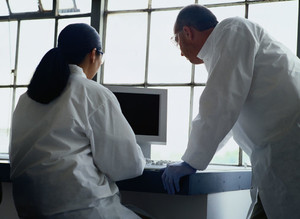The experience with generic medicines is a sign that prescribers are likely to be cautious, and in some cases concerned, about the use of biosimilars as alternatives to brand-name drugs.
Generic medicines should represent the simplest case when it comes to substituting brand-name originator drugs for cheaper, but bioequivalent products. Generics are simple chemical copies of originators that have gained approval following demonstrations of pharmaceutical and pharmacokinetic equivalence. And yet, following approval, studies have revealed some variations in the pharmacokinetic properties, therapeutic efficacy and clinical outcome, according to a review by MS Aapro [1]. Professor Aapro cites one example showing that two generic versions of the antibiotic amoxicillin marketed in Italy were found not to be bioequivalent compared with the brand-name drug [2].
Despite such differences, there is considerable encouragement towards the purchasing and prescribing of generics in the form of reimbursement incentives, such as deductible, co-payments, and marketing activities; for example, reduced prices, attractive packaging, co-branded original, the availability of many different generic drugs, etc. Even so, there remains, in some instances, reluctance on the part of patients and clinicians when it comes to switching from brand-name to generic drugs. This has been documented in Switzerland where, after controlling for characteristics such as age, gender, treatment complexity, substitution groups, there were marked differences between different geographical regions (cantons) in the prescribing of generic drug substitutes. According to the author, the overall generics substitution rate for 173,212 dispensed prescriptions was 31%, though the substitution rate was 13% lower among hospital physicians. Part of this difference was due to patient health status–age and complexity of treatment, but mostly it appeared to be prescribing behaviours and the individual beliefs of doctors and patients [3].
So what are the prospects for biosimilars? Will they be broadly accepted by prescribers and patients or not? Biosimilars are large proteins produced through recombinant DNA technology, and hence there may be batch variation in their pharmaceutical properties according to the manufacturing process. EMA-approved biosimilars presently exist for two types of drug, granulocyte colony-stimulating factor (G-CSF), for the treatment of febrile neutropenia; and epoetin, for the stimulation of red blood cell production in the treatment of anaemia. Guidelines state that pharmacists must inform physicians and patients of any switch from the brand-name originator drug to biosimilar products, and that the use of biosimilars must be traceable.
According to Professor Aapro, prescribers may be concerned about the potential variation in potency that could arise between biosimilars and their originator products, particularly given the variation in potency that exists between different versions of originator recombinant versions of epoetin alfa, for example, even though these are within the limits defined by the European Pharmacopoeia [4]. However, prescribers may feel reassured by the guidelines produced by regulators such as European Organisation for Research and Treatment of Cancer, European Society for Medical Oncology and FDA, who all provide guidelines on the use of originators and biosimilars. G-CSF, for example, should only be used in patients with a 20% or higher risk of febrile neutropenia, if they are under the age of 65 and epoetins are recommended only for patients undergoing chemotherapy.
Besides clinical issues, there are also economic variables among different countries that affect the prescribing of generics, such as education, prescribing targets and financial incentives. As Professor Aapro concludes, ‘one hopes that besides the EMA mandated quality of biosimilars, appropriate economical data will lead to the acceptance of these agents by the medical community.’
Related articles
Physician perceptions of generics substitution
Biosimilars use in Europe
References
1. Aapro, M.S. What do prescribers think of biosimilars? Target Oncol. 2012 Mar;7 Suppl1:S51-5.
2. Del Tacca M, Pasqualetti G, Di Paolo A, et al. Lack of pharmacokinetic bioequivalence between generic and branded amoxicillin formulations. A post-marketing clinical study on health volunteers. Br J Clin Pharmacol. 2009 Jul;68(1):34-42.
3. Decollogny A, Eggli Y, Halfon P, Lufkin TM. Determinants of generic drug substitution in Switzerland. BMC Health Serv Res. 2011 Jan 26;11:17.
4. Schellekens H. Assessing the bioequivalence of biosimilars The Retacrit case. Drug Discov Today. 2009 May;14(9-10):495-9.








 0
0











Post your comment